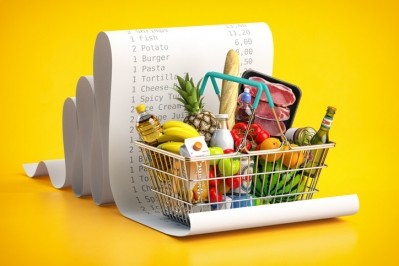Volatile grocery prices force consumers to cut back, create tension at retail level

In June, prices for food consumed at home remained the same month-over-month after increasing 0.1% in May over April following several months of decline beginning with a 0.3% drop in March and a 0.2% drop in April, according to the Consumer Price Index updated yesterday by the Bureau of Labor Statistics.
A 7.3% drop in the price of eggs in June following a sharp 13.8% drop in May along with a smaller but notable 0.4$ drop in the index for meats, poultry, fish and eggs offset a upward trend in the price for fruits and vegetables and for cereals and bakery products. The former increased 0.8% in June following a 1.3% increase in May, while the cereal and bakery products index rose 0.1% in June over the prior month.
The mixed results are triggering mixed feelings among industry experts and consumers, who feel encouraged by the overall declines in inflation, but also weary but ongoing volatility.
“The really good news is that [food prices] are continuing to head in the right direction and are going down. Whether we’ll hit the fed’s sub-2% level this year, remains to be seen, but is probably unlikely,” said Andrew Harig, vice president of tax, trade, sustainability and policy development at FMI – The Food Industry Association.
He explained during a webinar hosted by FMI yesterday the inflation for food consumed at home hinges on more than just commodity prices, which is why some categories are falling and some remain stubbornly high.
“If you look at something like bakery and cereal, it’s not only commodity prices, like wheat, that go into the cost of it. There are a lot of other factors. And the further you get away from the straight commodity prices, and you to the number of factors, that tends to mean there are more individual issues you have to focus on going forward.
“For bakery and cereal, in particular, because there is processing involved they are very susceptible to labor and transportation costs. And what we continue to see in that sector broadly is labor … still remains a huge challenge for the industry. Transportation, although a lot of the supply chain disruptions from the COVID era and even after are starting to alleviate, transportation can still be challenging,” he said.
He added that packaging prices also continue to be volatile, especially aluminium prices.
Consumer resiliency remains a top concern
While many industry players are not able to absorb additional increases in cost without passing them along to consumers, “everybody continues to be acutely concerned about consumers and how resilient they are,” added Mark Baum, vice president of education program development at FMI.
As such, he said, retailers and manufacturers are working closely to keep the spread between the producer price index – or how much they pay for wholesale goods – and the consumer price index or inflation rate consumers experience as narrow as possible.
“But,” he said, “it’s harder in some categories than others.”
As prices continue to shift, consumers continue to face tough decisions in the grocery aisles, including where they shop and what they buy, according to a recent survey from Inmar Intelligence.
According to Inmar Intelligence, 70% of shoppers are cutting back on other household expenses to budget for groceries, but many also are pulling back on their food allowance.
Almost a third of shoppers are purchasing fewer groceries overall, while 34% report changing the type of food they buying and 45% are skipping the ‘extras,’ such as desserts and snacks.
Others are changing where they shop, according to the survey which found about three-quarters of respondents are buying more groceries from dollar stores to offset higher prices at grocery chains.
These shifts are creating tension between retailers and manufacturers as each looks to protect their margins and maintain consumer loyalty.
“Clearly, retailers are looking at the most competitive items within their assortments within their marketplaces and trying to stay as competitive as they can or keep prices low or the spread lower on those than others,” Baum said.
“But,” he added, “we’re not out of the woods yet .. and we continue to watch [inflation] very, very closely.”















